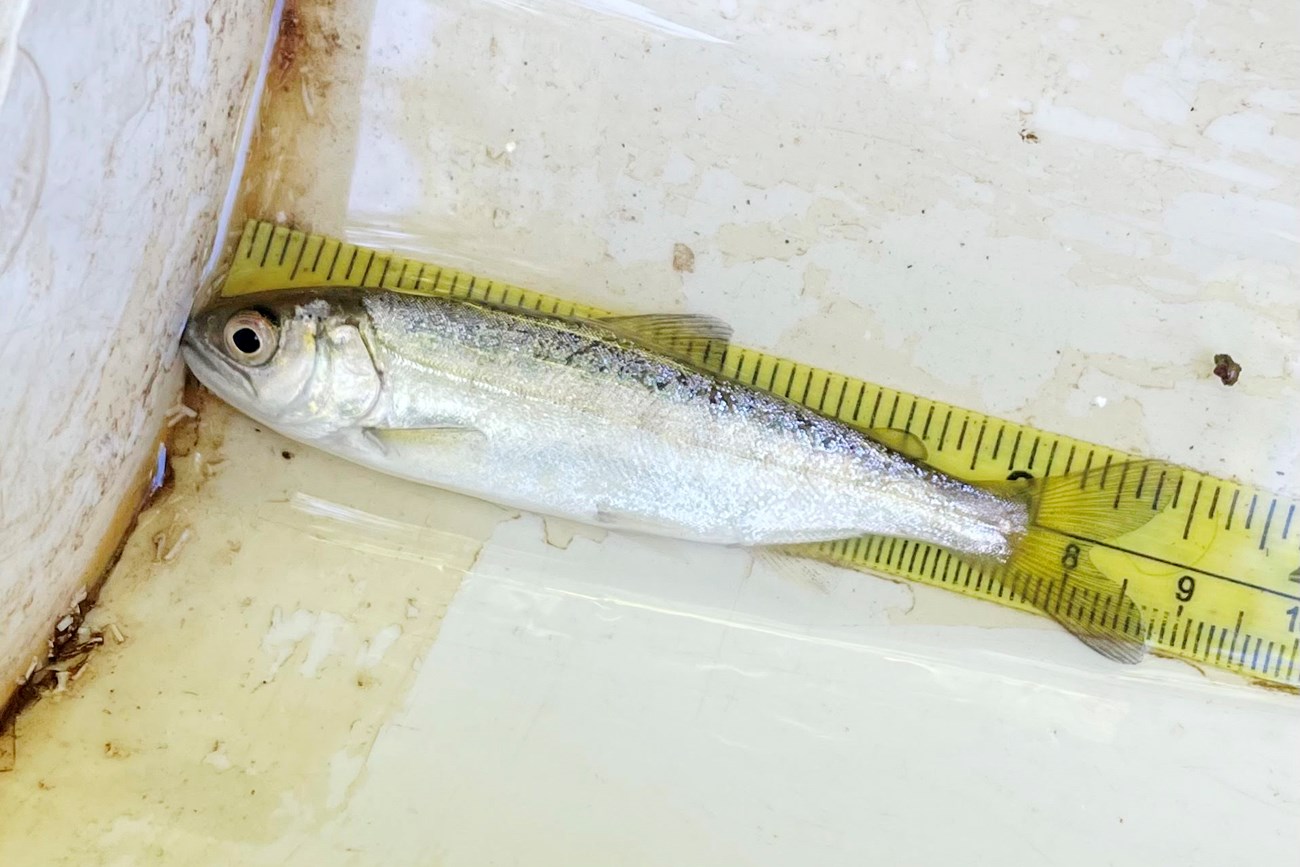Last updated: June 22, 2022
Article
2022 Smolt Trap Recap
By Watershed Stewards Program Corpsmembers Tara Blake and Natale Urquhart, San Francisco Bay Area Network Salmonid Monitoring Program
June 2022 - Each spring, young salmonids begin their migration downstream towards the ocean. From mid-March through late May, the San Francisco Bay Area Inventory and Monitoring Network (SFAN) fisheries crew maintains downstream migrant traps (commonly called smolt traps) on Olema and Redwood Creeks to study them. With these traps, we aim to document the abundance of juvenile coho and steelhead salmon migrating from freshwater creeks to the ocean. Check out this video about the process of installing and running smolt traps, to learn more!

NPS / Watershed Stewards Program Corpsmember Tara Blake
Smolts are typically 3–5 inches in length and boast shimmering colors along their bodies. Smoltification is a seasonal process occurring in the spring when there is more sunlight on the creeks. It entails physiological changes in the fish. Their bodies become longer and more streamlined, their scales become more silvery, and their gills and kidneys alter their functions to better process salt in the water. These changes prepare them for life in the ocean.
In the 12 weeks that our smolt traps were operating, our crew captured over 1,700 salmonid smolts. Coho salmon made up the majority of our smolt numbers, but Chinook and steelhead salmon were also found on both creeks.
A particular highlight of the season was the capture of over 1,500 coho smolts on Olema Creek. Coho smolts can be distinguished from their Chinook and steelhead counterparts by their larger eyes and hooked anal fin. Based on preliminary estimates, this is the highest smolt outmigration recorded since monitoring began in 2004. It also marks a 10-fold increase in the number of smolts leaving Olema Creek for this cohort. During the winter of 2023-2024 we hope to see roughly 2%—or about 100 to 150—of these fish return as adults to spawn in Olema Creek. Their successful return is dependent upon good ocean conditions and sufficient rainfall.

NPS / Watershed Stewards Program Corpsmember Tara Blake

NPS / Watershed Stewards Program Corpsmember Tara Blake
Our less frequently observed and most anomalous salmonid is the Chinook smolt. We documented about 40 for the first time ever in the smolt traps. They are the offspring of the adults that came up during last fall’s heavy October storms. Where coho and steelhead salmon will stay in the freshwater for about a year before moving to the ocean, Chinook outmigration occurs during the same year they hatched.

NPS / Watershed Stewards Program Corpsmember Natale Urquhart
For more information
- San Francisco Bay Area Network Salmonid Monitoring webpage
- Pacific Coast Science & Learning Center Coho & Steelhead webpage
- Contact Fishery Biologist Michael Reichmuth
See more from the Bay Area Nature & Science Blog
